Intro of Tips for maintaining fitness equipment
Fitness equipment can be a significant investment for both home and commercial gyms. To ensure longevity and proper performance, regular maintenance is essential.
Whether you own a treadmill, stationary bike, or weight machine, keeping your equipment in good condition can save you from expensive repairs and enhance safety during use. This guide will provide simple, actionable tips to help you maintain your fitness equipment and maximize its lifespan.
Why Fitness Equipment Maintenance Matters
Proper maintenance of fitness equipment offers several advantages, including:
- Cost savings: Regular upkeep can prevent expensive repairs and replacements.
- Enhanced safety: Well-maintained equipment reduces the risk of accidents and injuries.
- Improved performance: Equipment that is taken care of runs more smoothly, offering a better workout experience.
- Longevity: Regular checks and maintenance can extend the lifespan of your equipment.
Neglecting maintenance can lead to broken parts, equipment malfunctions, or even permanent damage. With some simple upkeep, your fitness gear can last much longer and stay in top working order.
General Maintenance Tips for All Equipment Types
1. Keep Equipment Clean
Fitness equipment comes into direct contact with sweat, dust, and debris. Regular cleaning is essential to prevent buildup, which can damage surfaces and make equipment less effective.
- Wipe down after each use: Use a soft cloth to remove sweat and dirt from surfaces.
- Avoid harsh chemicals: Stick to a mild cleaner or disinfectant to prevent corrosion or damage.
- Clean underneath and around: Don’t just clean the visible surfaces. Dust and grime can collect underneath and around the base of your machines, which may affect performance.
2. Check for Wear and Tear Regularly
Frequent inspections of your fitness equipment can help you identify issues before they become major problems. Regularly check for:
- Loose bolts or screws: Tighten any loose parts to prevent shaking or instability.
- Cracks or damage: Look for cracks in plastic parts or rust on metal surfaces.
- Worn-out components: Cables, belts, and resistance pads can wear out over time. Ensure these are functioning smoothly.
3. Lubricate Moving Parts
Lubricating the moving parts of your fitness equipment will reduce friction and help prevent premature wear.
- Use proper lubricants: Refer to the manufacturer’s guidelines for the right type of lubricant.
- Common areas to lubricate: Pulleys, running belts, and joints are critical areas to apply lubricants regularly.
4. Tighten Bolts and Screws
Equipment that sees regular use can experience loosening bolts and screws. This can lead to instability or even breakage. Always:
- Check fasteners: Tighten all visible bolts and screws every few weeks, especially on machines with moving parts.
- Focus on high-use parts: Treadmills, for example, have many fasteners on the deck and belt area that need frequent attention.
Specific Tips for Different Equipment
Treadmills
- Clean and lubricate the running belt: Dirt and debris can accumulate on the running belt, leading to wear. Clean the belt with a damp cloth after every use and lubricate it according to the manufacturer’s instructions.
- Inspect the motor and console: Check for any signs of wear or malfunction. If the console is unresponsive or the motor produces strange noises, it’s time for a service.
Exercise Bikes
- Check the pedals and chain: Ensure pedals are secure and not showing signs of wear. Lubricate the chain if necessary to prevent it from getting too stiff or noisy.
- Adjust the resistance system: If the resistance feels uneven or doesn’t adjust properly, it may need recalibration or inspection.
Rowing Machines
- Lubricate the rail: The rail where the seat slides should be lubricated regularly to ensure smooth movement. Use a dry silicone spray for best results.
- Check the resistance mechanism: Make sure the hydraulic or air resistance system is functioning properly. Adjust the resistance levels to ensure smooth and consistent performance.
Weight Machines
- Inspect the cables and pulleys: Weight machines rely on cables for smooth operation. Check for any signs of fraying or damage. Replace any broken or damaged cables promptly.
- Check the weights: Ensure the weights are properly secured and move freely without sticking or jamming.
Free Weights
- Inspect for damage: Check dumbbells, barbells, and kettlebells for any cracks or chips. Damaged weights should be replaced immediately to prevent injury.
- Secure weight plates: Always make sure that weight plates are properly fastened to the bar. Use collars to prevent them from slipping during exercise.
Environmental Considerations for Fitness Equipment
Maintaining fitness equipment is not just about regular cleaning and mechanical checks; the environment where the equipment is stored plays a crucial role in its longevity. Proper storage and protection from environmental factors such as humidity, direct sunlight, and temperature fluctuations can greatly extend the lifespan of your gear. Here are some important considerations for maintaining your equipment in the right environment.
Store Equipment Properly
One of the most important factors in maintaining fitness equipment is how and where it’s stored. The wrong storage conditions can accelerate wear and tear, leading to unnecessary damage.
Keep Equipment in a Dry Area
Humidity is one of the biggest threats to fitness equipment, particularly metal parts. Excess moisture in the air can cause rusting, corrosion, and mold growth, all of which can severely impact the functionality and appearance of your equipment.
- Why it matters: Humid environments can cause metal parts like screws, bolts, and frames to rust. Moisture can also affect electronics and wiring, causing malfunctions or short-circuiting in electronic displays and motors.
- How to protect your equipment: Store your equipment in a dry area with good airflow. If you’re in a particularly humid climate, consider using a dehumidifier to keep the room moisture-free. Avoid basements or garages that are prone to high humidity unless they are climate-controlled.
Store Machines Upright
Larger pieces of fitness equipment, such as treadmills, exercise bikes, and rowing machines, can take up a lot of space. Storing them properly not only saves space but also helps prevent unnecessary strain on the equipment.
Why it matters: Storing large equipment incorrectly can place unnecessary pressure on parts like the motor, belt, or frame. Storing equipment upright or in a more vertical position helps prevent parts from becoming misshapen, sagging, or becoming uneven over time.
How to store: If possible, store machines like treadmills or exercise bikes upright to conserve floor space and reduce the potential for any stress or strain on their components. If this isn’t feasible, try to store them in a way that minimizes strain on their frames and parts, such as using equipment stands or moving the machine to a secure location.
Protect Equipment from Direct Sunlight
While sunlight can be a great way to brighten up your workout space, too much exposure to direct sunlight can cause a lot of damage to fitness equipment. This is particularly true for items with plastic or upholstery parts that are sensitive to UV rays.
Place Equipment Away from Windows
UV rays from the sun can break down materials over time, causing them to fade, crack, or weaken. Upholstered parts on machines like treadmills, stationary bikes, and benches are particularly susceptible to this kind of damage.
Why it matters: Exposure to sunlight can cause fading on fabrics, plastic parts, or foam padding. Over time, the strength of materials like rubber or plastic can degrade, leading to cracks or splits. UV radiation can also affect electronic components, which may cause malfunctioning.
How to protect: Whenever possible, place your equipment away from direct sunlight by positioning it in shaded areas of your home or gym. You may want to avoid placing equipment near large windows, skylights, or in rooms where sunlight is constant throughout the day. Using curtains or blinds can also help reduce direct sunlight exposure and prevent UV damage.
Cover Unused Equipment
When equipment is not in use for long periods, it’s more vulnerable to environmental damage, especially from sunlight, dust, or moisture. Covering your equipment can offer an extra layer of protection.
Why it matters: Even if your equipment is stored away from direct sunlight, dust and grime can accumulate, and moisture can still cause damage over time. Covers help shield the equipment from dirt, debris, and any potential exposure to weather elements in case of sudden changes in room humidity or temperature.
How to protect: Consider using protective covers designed for your specific machines or pieces of equipment. These covers are often made of breathable fabric that prevents moisture buildup while still allowing airflow. For bikes, treadmills, or other large machines, invest in durable covers to keep your gear safe and clean when not in use.
Routine Maintenance Schedule
Create a Checklist
Developing a maintenance checklist will help you stay organized and consistent with upkeep. Include tasks such as:
- Wiping down equipment daily
- Lubricating parts monthly
- Inspecting cables, belts, and pulleys every three months
Set a Maintenance Schedule
It’s best to establish a routine maintenance schedule. Some tasks, like cleaning, should be done after every use, while others, like inspecting belts and cables, can be done monthly or quarterly.
- Daily tasks: Wipe down equipment and inspect for any obvious issues.
- Monthly tasks: Lubricate moving parts, check fasteners, and perform a more thorough inspection.
- Quarterly tasks: Deep clean equipment, inspect major parts for wear, and check the overall functionality.
You can also read Best fitness certifications for personal trainers
Signs That Your Equipment Needs Repair
While regular maintenance can prevent issues, you should also be on the lookout for warning signs that your fitness equipment may need repairs.
Unusual Noises
If your equipment starts making strange noises like squeaking or grinding, it may indicate that certain parts are worn out or in need of lubrication.
Uneven or Jerky Movements
Resistance that’s difficult to adjust or jerky movements during use can signal malfunctioning parts, like the motor or resistance system.
Console Malfunctions
If the display console on your treadmill or exercise bike isn’t responding properly or displays inaccurate data, it could be an electrical issue or a malfunctioning sensor.
When to Call a Professional
While you can handle basic maintenance tasks on your own, some issues require the help of a professional. Here are a few instances when you should call for professional repair:
- Malfunctioning motors: If the motor is malfunctioning or making a strange noise, it’s best to have a professional inspect and repair it.
- Broken parts that need replacement: If a part is severely damaged, such as a bent frame or a broken resistance system, it might need professional repair or replacement.
- Electrical issues: If you’re experiencing problems with electrical components (such as a malfunctioning console or sensors), don’t attempt to fix them yourself.
My Opinion| Tips for maintaining fitness equipment
Maintaining your fitness equipment is crucial for keeping it in good working condition, ensuring safety, and extending its lifespan. By following the simple maintenance tips outlined above, you can prevent unnecessary repairs and continue enjoying your workouts without interruption.
Remember, regular cleaning, lubrication, and inspections are key to avoiding costly repairs. Keep a maintenance checklist, stay consistent with your schedule, and don’t hesitate to call a professional if the need arises. With these tips, your fitness equipment will be ready to support your fitness goals for many years to come!




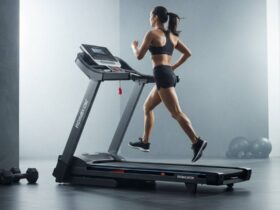


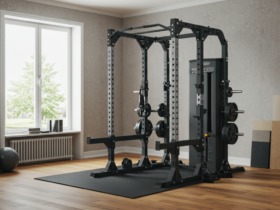

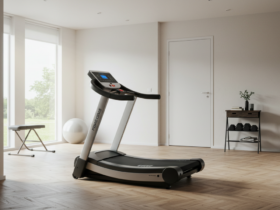




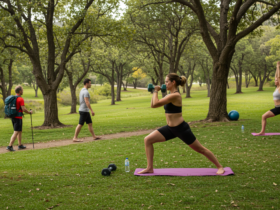

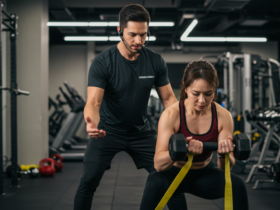

Leave a Reply
View Comments